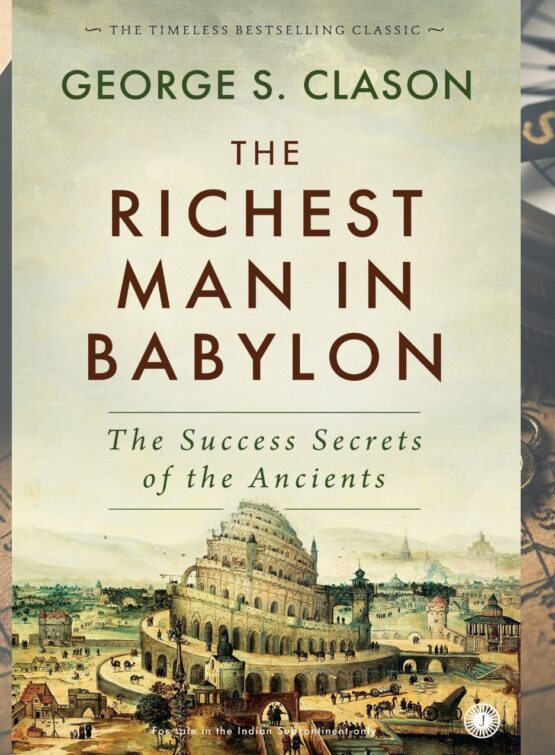Overview:
Hello buddies! It has been a long time since I have posted in this category, “Books on Finance and Investing”. Anyways, let’s continue. We shall discuss another simple yet very influential and powerful book with a concept of value investing and the famous Magic Formula investing strategy.
It is none other than “The Little Book That Beats the Market”, written in 2005 by famous value investor and hedge fund manager, Joel Greenblatt. His investment, Gowtham Capital, has given astonishing annual returns of 50% for over 10 years, between 1985 and 1994.
Joel Greenblatt believes in long term investing and recommends to buy and hold stocks for a minimum of one year in his magic formula investing. According to him, markets are erratic in the short term and efficient in the long term. With millions of copies sold since publishing, The Little Book That Beats the Market is one of the best books on value and long term investing.
Here are a few key takeaways:
- “Choosing individual stocks without any idea of what you’re looking for is like running through a dynamite factory with a burning match. You may live, but you’re still an idiot.” ― Joel Greenblatt, The Little Book That Beats the Market
- Magic Formula Investing Strategy: The Magic Formula is based on two fundamental ratios, Return on Capital (ROC) and Earnings Yield (EBIT/Enterprise Value)
- Return on Capital or ROC = EBIT/ (Net working capital + Net fixed assets). ROC is the ratio of the Earnings before Interest and Taxation (EBIT) to tangible capital employed (Net working capital + Net fixed capital).
- Earnings Yield = EBIT /Enterprise Value. Enterprise Value = Market Capitalization + Total Debt – Cash & Cash Equivalents.
- The process of investing through Magic Formula is fairly simple. Choose a company that belongs to a decent market capitalization, $100 million in the US. In India, it is safe to choose companies with a market capitalization of over ₹10000 crores.
- Rank the companies based on ROC and Earnings Yield separately. Suppose a company XYZ ranks 25 in ROC and 49 in Earnings Yield, then its combined rank is 25 + 49 = 74.
- Make a list of 20 to 30 companies with the lowest combined score and invest accordingly. You can invest 30% of your investment capital in 5 of the best stocks with the lowest score. Wait for a year and sell those stocks for whatever the profit. If the process is successful and you feel more confident, you can proceed with more capital.
- We can get a list of these companies from some financial websites that offer screener tools, like www.stockopedia.com. There is an official website www.magicformulainvesting.com where you can get this information as paid service.
- Since the minimum tenure of investment is one year, many institutional investment firms find it difficult to hold if stocks decline continuously for two quarters or more. Because of fierce competition, the asset managers do not risk negative performance compared to other funds. This is a clear advantage for retail investors who are willing to stay invested for the long term.
- It is also possible for you to make good use of taxation laws on investments. For best results, in India, sell exceptional performing stocks after one year. Sell the below average or negative performing stocks in less than one year(maybe a week before).
- Rebalance the portfolio every year and continue the process every year for a minimum of 5 to 10 years.
Sample for Calculating Magic Formula:
To make it easier for you, I chose the top 10 Nifty companies and calculated their combined scores using the magic formula. I have used tools from the website www.screener.in for the calculations.

The rankings provided in the above picture are only comparative between the top 10 companies of Nifty via Market Capitalization. The other companies of Nifty are not considered in this evaluation. Out of the ten companies, HDFC Bank has the best-ranking score of 4. TCS and ITC have the second-best combined rank of 5. Even though, Reliance is at the top of the list, its rank is 11, which is the second last.
If you screen for companies with a market cap over ₹10000 crores, you will find around 255 companies as of 23/10/2021. It is not that difficult to find the best 20 companies among those using the magic formula.
Disclaimer:
I provide the information and my views on the website only to educate new investors, stock market enthusiasts, and the common public on equity and other market investments. Please consult your financial adviser before making any investments in the stock or commodity markets. In case of any queries, you can contact me or email: admin@valueinvestingonline.in.




